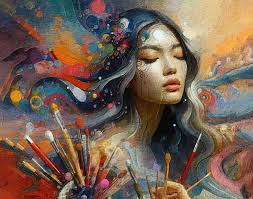Art:-Mdag1ognx4= Best

The concept of artistic excellence extends beyond technical skill, delving into the profound impact that art can have on both individuals and society at large. Masterpieces often encapsulate the zeitgeist of their time, embodying complex emotions Art:-Mdag1ognx4= Best challenging prevailing norms. As we explore the key elements that define the best art, it becomes evident that these works not only reflect cultural values but also shape them. What, then, are the defining characteristics of these transformative pieces, and how do they continue to influence contemporary discourse? The answers may reveal more than mere aesthetic appreciation.
Defining Artistic Excellence
Defining artistic excellence requires a nuanced understanding of both technical skill and emotional resonance. At its core, artistic excellence transcends mere adherence to established artistic standards; it invites a dialogue between the creator and the observer, where subjective interpretation plays an integral role. This interplay fosters an environment where freedom of thought and personal experience enrich the appreciation of art.
Technical skill remains a fundamental pillar of artistic excellence, providing the tools necessary to convey complex ideas and emotions effectively. However, it is the emotional resonance that ignites the viewer’s imagination, transforming a simple piece into a profound experience. Artists who master this balance often challenge conventional norms, prompting audiences to explore the depths of their own feelings and perceptions.
Moreover, the subjective nature of art means that what resonates with one individual may not hold the same significance for another. This diversity of interpretation highlights the freedom inherent in artistic expression, allowing for a multitude of perspectives within a single work.
Ultimately, defining artistic excellence is an ongoing conversation that embraces both skill and emotional depth, reflecting the rich tapestry of human experience.
Read Also: Art:-Bm0u70astk= Kirby and the Forgotten Land
Key Elements of Art:-Mdag1ognx4= Best
Masterpieces resonate through a combination of several key elements that elevate them beyond ordinary works of art. At the heart of any masterpiece lies the artist’s unique vision, which often reflects a profound style evolution. This evolution not only showcases the artist’s personal growth but also captures the zeitgeist of the era, making the work timeless and relevant.
Another crucial element is emotional resonance, which allows viewers to connect deeply with the artwork. Masterpieces evoke a range of feelings—joy, sorrow, nostalgia—creating an intimate dialogue between the art and the observer. This connection is often facilitated through the use of color, composition, and subject matter, each meticulously crafted to stir the viewer’s emotions.
Furthermore, technical mastery plays an indispensable role in distinguishing a masterpiece. The artist’s skillful manipulation of their chosen medium—be it paint, sculpture, or digital form—demonstrates not only proficiency but also a willingness to experiment, pushing the boundaries of creativity.
Ultimately, the interplay of style evolution and emotional resonance in masterpieces invites audiences to explore, reflect, and embrace the freedom that art uniquely offers.
Cultural Impact and Legacy
How do art and culture intertwine to shape societal narratives? Throughout history, art has emerged as a powerful vehicle for cultural evolution, reflecting the values, struggles, and aspirations of diverse communities.
Artistic movements, such as Impressionism and Surrealism, challenged conventional perspectives and ignited conversations about identity, freedom, and the human experience. These movements did not merely create aesthetic shifts; they redefined societal boundaries and contributed to a collective consciousness that transcends time.
The legacy of art is evident in its ability to foster social change and inspire future generations. It provides a platform for marginalized voices, encouraging dialogues that are essential for progress.
Artistic expressions serve as historical documents, encapsulating the zeitgeist of particular eras and often prompting critical reflection on prevailing societal norms.
Moreover, the cultural impact of art is profound, as it influences everything from politics to personal identity. As we navigate contemporary issues, the lessons gleaned from past artistic movements remind us of the importance of creativity in advocating for freedom and equity.
Ultimately, art is not merely a reflection of culture; it is an active participant in the ongoing narrative of human existence.
Read Also: Art:818uvqexl84= Hispanic Heritage Month
Conclusion
Artistic excellence transcends individual interpretation, embodying a complex interplay of technical proficiency, emotional resonance, and cultural relevance. The theory positing that art serves as a mirror to societal values holds Art:-Mdag1ognx4= Best merit, as masterpieces often challenge prevailing norms and provoke critical discourse. By fostering connections across generations, art not only reflects the zeitgeist but also shapes future cultural narratives. Thus, the enduring impact of exceptional art underscores its role as a catalyst for both personal reflection and societal evolution.




